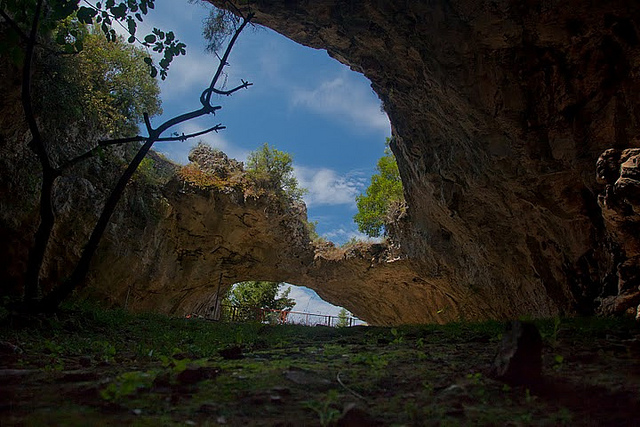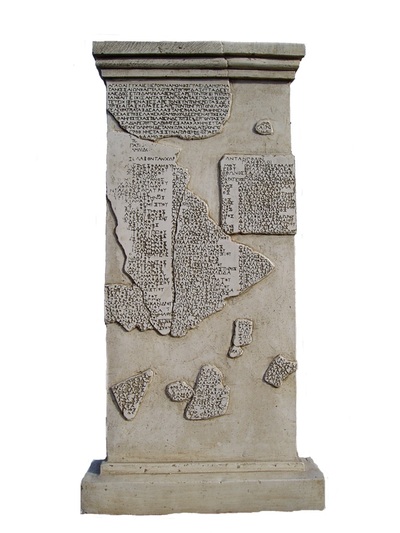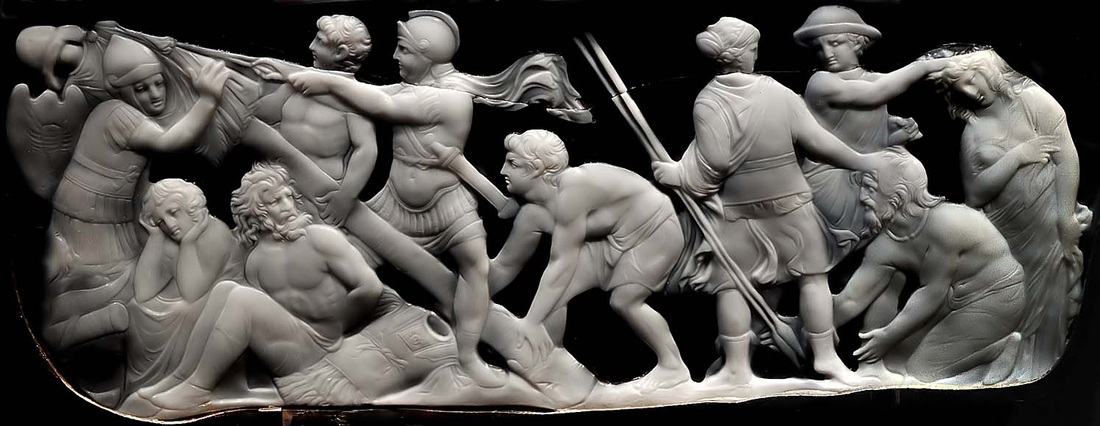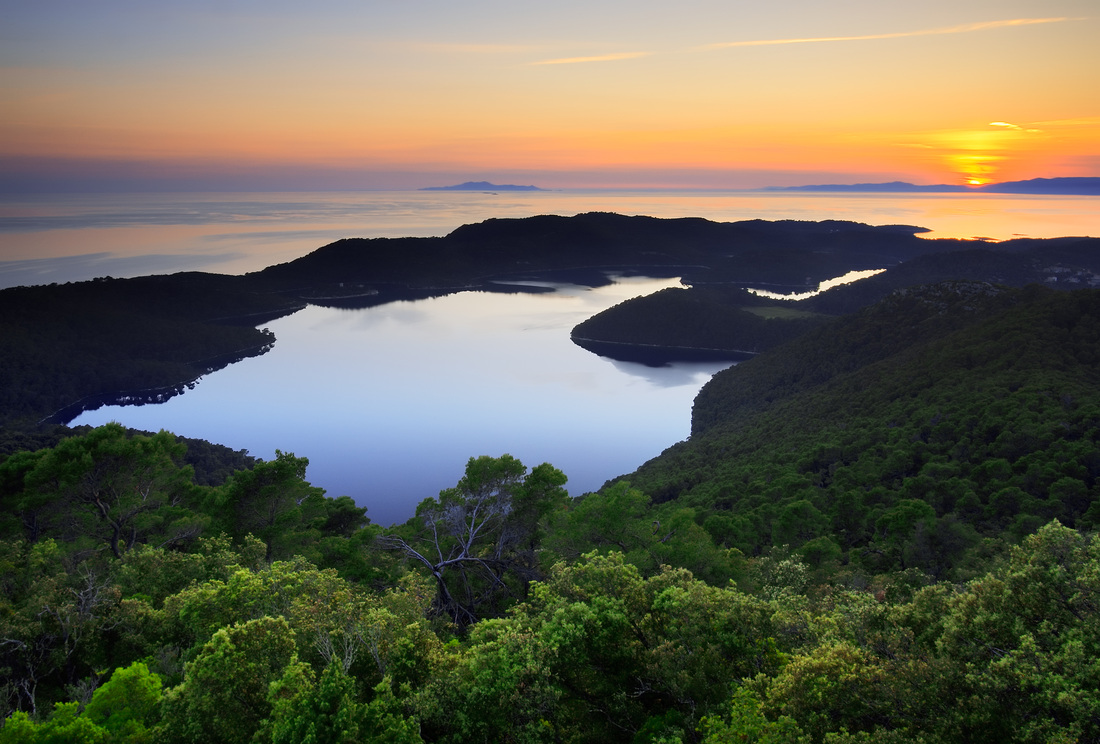|
Visit us at croatia.hr/en-GB/accommodation/vela-luka/dalmatia-dubrovnik/facilities-household/matanic-vladimir
and check for last COVID19 updates from croatia.hr/en-GB/coronavirus-2019-ncov-q-and-a
0 Comments
In 2007 the little island of Proizd was chosen as the Beach of the Year by the Croatian Tourist Board, whereas the British newspaper the Daily Telegraph placed it among the five most beautiful Adriatic beaches. Proizd has a rocky and pebbly coast and its north side is absolutely breathtaking. This is where Bili boci, a beach with white rocks immersed in the turquoise sea, can be visited. During the summer season a ship service connects Proizd with Vela Luka on a daily basis. Depending on the guests' desires, we can arrange special transport for 1day long excursions. There is a small restaurant next to Proizd's dock and well-managed forest trails lead you to Bili boci beach. The ancient Greeks who founded their colony Korkyra Melaina did not only establish a commercial and cultural center but also planted vines which have since produced wines esteemed all over the world.
The elegant jugs, called Oinohoe, from which the ancient Greeks enjoyed this natural liquid can be found in the museum of Korcula. The Greek writer Athenaios wrote twenty two centuries ago about the high quality wine produced on the Dalmatian island of Vis, Hvar and Korcula. In addition to these artistically designed jugs, the coins which have been excavated with various symbols connected with wine and vine growing are a testimony to the importance of wine for the economic life of the ancient inhabitants of Korcula and other Greek colonies; these coins can be seen in the numismatic collection of the Abbatial Treasury in Korcula, remnants of the centuries-long tradition of producing what was both an intoxicating drink and an important source of economy prosperity. One of the most beautiful stone columns in the Korcula cathedral of sv. Marko bears vine leaves cut into its capital. Wine is thus present not only in secular objects but also in artistic works and religious symbols. The tradition of vine growing by Romans and later by Slavs has produced numerous objects of artistic value. The stone presses (prese) from which wine was squeezed, the amphoras, from the sunken Roman galleys in the Korcula-Peljesac channel, the vine motifs on the Bogomil tombs, and decorations on religious monuments and household objects testify to the tradition of winemaking in the Korcula and Peljesac region and to the cult of wine produced in this area and its being treated as a sacred liquid. The statute of the town and island of Korcula of 1214 contains strict rules protecting the vineyards. Climatic and geographic conditions have enabled the growing of high-quality wines on the wine-growingarea of Korcula and Peljesac, and modern wine cellars guarantee the individual farmers not only a standard wine quality but also the purchase of their grapes. The Mediterranean climate, with its rather long, hot and dry summers and mild, short and windy winters with frequent rain as well as abundant sunshine, produces wines rich in dry extract and alcohol. The favorable climate and good soil in Korcula and Peljesac, give the wines a harmonious relation between their ingredients; alcohol, acid, minerals, tannin, colored matter, proteins, vitamins. The luring call of the Korcula-Peljesac wines could be resisted even by the legendary heroes Antenor and Odysseus on their travels in the distant mythological past. Mythology has passed into history and to the present and the Korcula and Peljesac wines are waiting for their future conquistadors who will come to enjoy, together with the people from their region, this eternal liquid - a compound of sun, soil and effort. The island of Korčula is renowned above all for the quality of its white, made from its native grapevine varieties. In the central region of the island grow Pošip and Rukatac, in Lumbarda, on the eastern tip of the island, there are the vineyards of Grk. Among the reds, the most popular is Plavac Mali. The wines of Korčula are celebrated for their exquisite character, for their complexity, for accentuated varietal aromas and for their high alcohol content – they reflect Mediterranean sunshine, scents and tastes. They are distinguished for their exceptionally fine acidity - unusual among southern wines - which makes them such a pleasure to drink. Pošip Pošip is native to Korčula and something of a world rarity in that we know the exact place of its discovery and the name of the grape grower who discovered it in the late 19th century. It is one of the first white wines to be protected by Croatian law. Pošip is traditionally grown in the central area of the island in the villages Smokvica and Čara, and has lately spread to other vineyards in the region. The wine is of splendid, straw-golden yellow colour. Rich and heavy it leaves a thick trail in the glass, and is pleasant, harmonious and full-bodied on the palate. Pošip is a perfect companion to all fish, shellfish and white meat dishes. It is best served at a temperature of 12-14 °C. Rukatac The Dalmatian grapevine variety Maraština, known on Korčula as Rukatac, found an ideal environment on this island more than a thousand years ago. Celebrated for its excellence it is often used to improve the taste of other wines. In the past it was mostly prepared as a desert wine, but today it is mostly dry. The light yellow colour, fullness and harmony of this wine reflect the local environment - Rukatac will not leave you indifferent! This elegant southern wine is best served with seafood and roasts, cooled to 12ºC. Grk The village of Lumbarda is renowned for its Grk, made from the native grape of the same name, which grows well on it's sandy soil. We do not know whether Grk got its name from its refined tart taste (grk means bitter or tart in Croatian) or from the Greeks who established a settlement on this tip of Korčula back in the 3rd century B.C. and planted the first vineyards here. A rich ancient wine-growing tradition combined with modern technology and oenology produce a dry wine with quite exceptional characteristics: it is recognised by its lightgreen-yellow colour with golden reflections, its emphatic cultivar aroma and its noble bouquet. It has a rich, harmonious and well-rounded taste with a long, slightly tart finish. Grk goes best with all sea-food as well as with white meat, but can also be served as an aperitif. It should be served cold at 12-13ºC. Plavac Mali Plavac Mali is native to southern Dalmatia and Croatia's most popular and best known red wine. It is grown on the southern slopes of the island, except in Lumbarda where it is grown not only because it makes a good wine itself, but also in order to help grow the Grk. Unlike most varieties of vine Grk has only a female flower, so Plavac Mali is grown alongside it as a pollinator. The wine from Plavac Mali grapes is dark red, even garnet coloured with traces of purple, and has a rich fruity bouquet embedded in a cultivar aroma and a warm, full and refined, well rounded, satisfying acerbic-to-soft taste. Plavac Mali goes well with fine foods prepared with dark meats, especially game, and also with fish and mature cheeses. It should be served at 18°C. Vela Cave is located on the southern slope of the hill Pinski rat, at 130 m above the bay of Kale in Vela Luka, one of the most important prehistoric archaeological sites in Europe.
Rials found provides evidence of colonization and all forms of life several prehistoric human communities that used the cave for everyday life and for the burial of their dead. Thousands found pottery fragments, whole vessels and other objects are found by first-rate importance. On them were printed pages of cultural, social, spiritual and economic relations users Vele Spileo the immediate and distant parts of the Mediterranean. More at http://velaspila.hr/en/ one of the most eminent and richest Mediterranean archaeological cave sites. The findings are currently preserved in Vela Luka Centre for Culture. The tracks of prehistoric life can be found on several localities on the island. The oldest are findings of the stone knives dating from neolith era on the island of Badija, near the city of Korčula. Žukovica Cave is situated between the bay of Vaja and the bay of Račišće. Jakas Cave is situated in the area of Žrnovo, south of podstrana, above the Rasohatica bay. Psephism of Lumbarda It dates from 3rd century B.C. and shows evidence of the existence of Greek settlement in this area. It is kept in the Archaeological Museum in Zagreb, while the findings from the destroyed necropolis from the area of Sutivan, dating from 3rd century B.C., are kept in the City Museum in Korčula. The Statute of City and the Island of Korčula It dates from 13th century and it is the second oldest example of legislation among Slavs. Experts believe that it was first drafted in 1214. Two old handwritten copies are preserved, one of which is kept in Rome, and the other in a private collection of the Kapor family in Korčula. Korčula cherishes many old customs, some of them are:
Sword dances Knight dances are performed on the patron’s day of a particular place. Today they are performed more often so numerous tourists can enjoy them. Kumpanija is performed in Blato, Vela Luka, Smokvica, Čara and pupnat. In Žrnovo Moštra is performed, and Moreška in Korčula. These dances show the battles between the conquerors and national army and present a real spectacle. Klape Klapa is a group of six to nine singers. Klapas used to sing in accapela style in the evening in the centre of the place, in a tavern or by the shore for their own pleasure. Often they used to sing serenades under their loved one’s window in night hours. These way men courted to women. Today, this kind of courtship is a rarity, but klapa singing stayed preserved. In summer you can listen to klapa in taverns, restaurants or on a concert. If you wish to experience real soul of Dalmatia, do not miss a chance to listen to live klapa singing. Carnival Carnival time begins the day of The Three Kings and lasts until the beginning of the Lent. It is a period of joy and fun. Each place organizes a costumed dance. Vrtujci and toretas ‘Vrtujci’ are dry-wall structures built in a specific way – by round piling of stone panels. They are coved with conic truss. In history they served as a shelter from rain. Also, people used to eat, rest or keep their farm tools there. There are around 15 of them in Vela Luka region. The biggest ‘vrtujak’ in the Vela Luka region is situated in Gornja Njivica and is 4.23 meters tall. In the Vineyards of Smokvica similar structures can be found which are known as ‘toretas’. There are five ‘toretas’ in Smokvica. Meje Meje testify of intense agricultural activity, farming and winegrape cultivation. ‘Meje’ are stone terraces – dry-walls. These stone terraces have historically prevented the rain or water to take away the land from hilly terrain. The stone for the construction of ‘meje’ was extracted from the parts where it was required, i.e. extracted from the ground where it was necessary to be taken out. Otherwise, it would have slowed down the growth of plants. In some places ‘meje’ served as the boundary walls separating the land among the owners. They are incorporated with the surroundning in such a degree that they look like a part of the landscape. Almost every hill on the island is covered with ‘mejas’, mostly on the south side of the island. It is calculated that with the total lenght of these stone fences, solely from the Blato area, the equator could be belted one and a half times. One cannot look at ‘meje’ without a strong sense of admiration for patience and hard word of the people who used to build them. Today, except for useful purposes, ‘meje’ also present the natural beauty that will surprise many visitors. Stone houses If you decide to explore the hills surrounding any of the places on the island, you will find many stone houses built also in a dry- wall techinque. Those houses were used to facilitate working in the fields. For example, during the period of fig harvesting whole family would move to the house on the hill so the work could be done faster and easier. Upon the completion of this work, they would go back to their homes. In some shops you can find miniatures of these houses and ‘vrtujaks’ and buy them as a souvenir. Korčula’s Greek name is Korkyra Melaina (lat. Corcyra Nigra). Name Korkyra is tied to a legend of beautiful nymph Kerkyra, daughter of Asop, God of Rivers. Zeus, the God of the Sea, fell in love with her, kidnapped her and held her in captivity on the island. This name Korčula shares with the Greek island of Corfu in Ionian Sea. Epithet black (melaina) comes from the dense pine woods which appear black when watched from the sea. Korčula is mentioned as Krkar by Konstantine porfirogenet in 10th century. The inhabitants of Korčula today use all the benefits of the modern age, while at the same time they respect the tradition and live in keeping compliance with nature.
Almost every family is engaged in agriculture, mostly wine grapes and olives, together with the job that ensures them their existence. Some families live solely from agriculture. It is hard to establish with certainty which place on the island is the oldest, some say Pupnat, some Blato... What is certain, however, is that the island of Korčula is inhabited from the ancient times. Illyrians were the first inhabitants, they were followed by the Greeks and the Romans. Croats came to the island in the 7th century. They all left their marks on the island; every place keeps secrets of ancient history. It is a part of the beauty of this, for tourists, still undiscovered island. In honor of our beloved Aunt Vesna… today’s birthday...
The adored Lady of Vesnini dvori usually called by her friends Aunt Vesna, was the first lady of social life for decades in Zadar and Vela Luka, places where she almost was able to pass her time during a year, gathered around her a number of known and unknown, artists and bohemians, politicians and journalists, fishermen, architects, doctors, lawyers. In her apartment in Zadar where she lived during the winter - also called the "yellow" house – situated in a part of Zadar recognized like as “Foša”, frequently stayed also many Croatian known people like as Vlado Gotovac, Franjo Tudjman, Leo Znidarčić, Miljenko Stancic, and Savka Dabcevic-Kucar's that for her whole life, from childhood, was her greatest friend. Vesna Matanic was a mother of four children and the wife of the Zadar's physician, researcher in dermatology and a famous Croatian scientist, Dr. Vladimir Matanic, the sister of academics Sime Vucetic and the niece of Blessed Marija Petkovic – in fact now exists the Sanctuary of Blessed Marija of Jesus Crucified Petković in Blato where many pilgrims from all over the world come to visit. She was friendly with the most famous Croatian intellectuals such as Vesna Parun, Tin Ujević, Luko Paljetak, Branko Gavella, Vojin Bakic, Edo Murtić ... We will remember her 80th birthday which was celebrated with glamorous hundred guests in the Zadar Marina and symbolically on Valentine's Day (2003), although he was born February 11, but, in fact "whole life was in love with love, beauty, art and friendship" as she herself often used to said. That evening her birthday came to congratulate many publicly known from Zadar, Zagreb, Vela Luka and abroad. Her friend then among other things said: “It is never imposed, but her people flocked, and were captivated with its originality...” Aunt Vesna’s last goodbye was in 2009, but she’s never leaving these places and the hearts of friends and family who loved and loves her… forever with us in our thoughts …
|
AuthorVilla Klematis Archives |







 RSS Feed
RSS Feed
